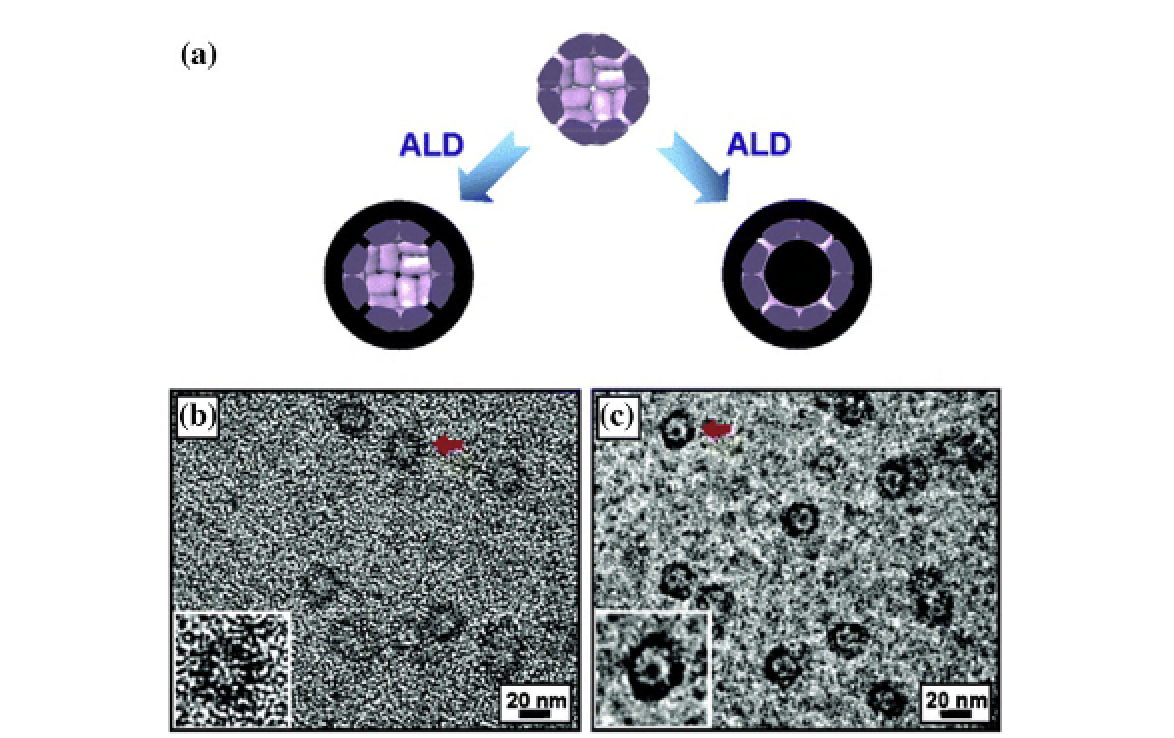Biomedical Engineering Reference
In-Depth Information
FIGURE 16.5
(a) Schematic depiction of two different TiO
2
nanostructures obtained by the ALD process. Typical bright-
field TEM images of (b) hollow-shell and (c) core-shell nanoparticles templated by apoferritin. Reprinted from Ref.
53
.
Copyright © 2009, with permission from the American Chemical Society.
Fewer difficulties appear if the channels are of
larger diameter, as is the case with the tobacco
mosaic virus (TMV). This plant virus was actu-
ally the first protein-based structure to which
an ALD process was applied
[29]
. The structure
of TMV is tubular with a length of 300 nm
and an outer diameter of 18 nm. Building blocks
consist of approximately 2,130 identical protein
subunits, which are helically stacked and form a
hollow channel with a diameter around 4 nm
along the axis of the virus. The TMV is the first
known virus
[54]
and the initiator of the whole
research field of modern virology. This particular
virus tolerates temperatures up to 80 °C, is not
harmful to mammals, and is easy to handle in
laboratories. For those reasons, even nonbiol-
ogists developed great interest in this virus,
either for the development of electron micros-
copy in 1939
[55]
or for nanostructure fabrication
[56-62]
, or more recently for various technolo
gical applications
[63-65]
.
The scientific question for treating TMV with
an ALD process was whether or not the virus
would resist the reactive precursor treatment at
elevated temperatures in a vacuum. To minimize
the impact, ALD processes were chosen that do
not require high temperatures—that is, deposi-
tion of Al
2
O
3
and TiO
2
at 35 °C
[29, 36]
. The mor-
phological features of the TMV were preserved
after the process, which could be deduced
because the outer diameter of the TMV remained
18 nm. Having been suspended on a substrate,
the coating affected the surfaces of the viruses as
well as the substrates they were suspended on,

